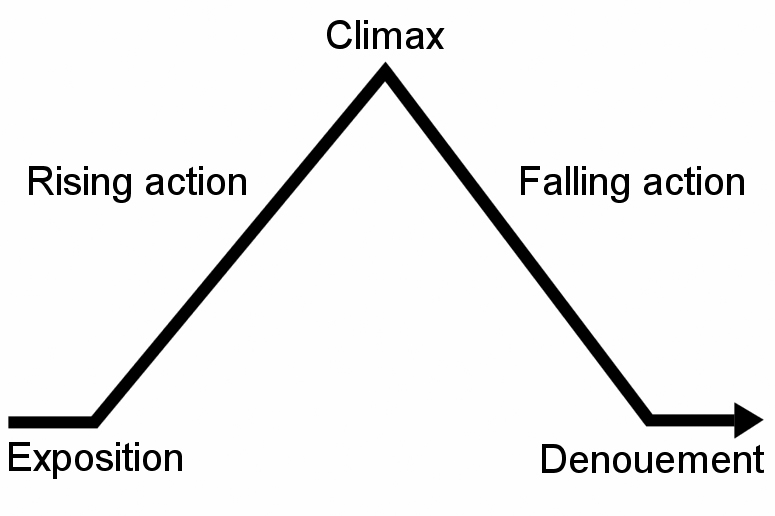The stages of our production using digital technology:
Planning
Animatics - Final Cut Express
Making animatics on Final Cut Express have helped us think about specific shots and camera moves we could use during our filming. It also helps us to think about how the sound works with each shot specifically including dialogue and music.
Script - Microsoft Word
From writing out a full script we know exactly what our actresses are saying - both voiceovers and dialogue. In turn this saved us a lot of time because we weren't spending time rephrasing dialogue before we filmed.
Research
Internet - Google, YouTube, Wikipedia
We have used the internet to research into existing products, codes and conventions for both short films and dramas. By looking at existing products and conventions we had an idea of what was expected of dramas and short films. Gustav Freytag was a 19th century theorist who believed that all dramas were set up in five parts. Freytag's dramatic arc/pyramid is made up of exposition, rising action, climax, falling action and finally denouement. This helped us structure our own drama short film. My breadth of knowledge of conventions has grown and if I were to create another drama short film I believe I would be able to create a stronger and more emotional final media product.
Construction
Final Cut Express - Editing
We decided to use Final Cut Express for all of our editing rather than iMovie because it has a wider variety of effects and potential to create a media product. iMovie on the other hand feels more limited and restricting.
iMovie, Microsoft Word and Easy Speak - Commentary
Adobe Photoshop - Poster
Adobe InDesign - Review
Evaluation
Adobe Photoshop - Photo infographic and Photo montage
PowerPoint - What I have learnt from audience feedback
Grab and Print Screen - Screenshots for evaluation questions
Throughout our media project I have gained a variety of skills and explored new technologies I have never used before to help create our final media product. Some of these skills include: creating the poster on Photoshop, review on InDesign, editing and animatics in Final Cut Express (credits, title, filters and effects, sound manipulation and music) commentary on iMovie, blogging on Blogger and uploading on YouTube. Without the use of digital technology a film would not have been possible to be made - everything form filming, editing, marketing, distribution and exhibition all require the use of digital technology.












































